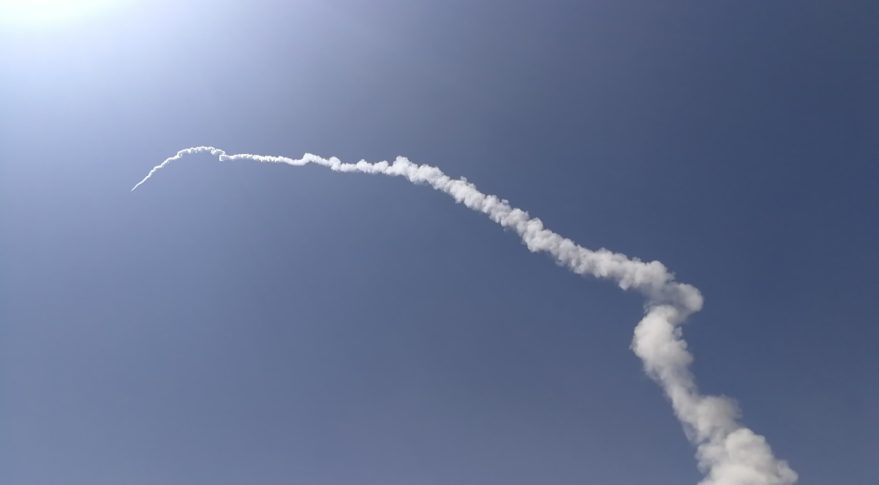China Launches 5 Commercial Remote-Sensing Satellites Into Orbit

HELSINKI — China successfully completed its twelfth orbital launch of 2018 late on Wednesday, sending five small Zhuhai-1 remote sensing satellites into orbit.
The Long March 11 solid-propellant rocket lifted off at 12:42 Eastern on April 26 from a mobile launch platform at the Jiuquan Satellite Launch Center in the Gobi Desert.
The planned activity was known to outside observers through airspace closure notices, but launch was only confirmed through Chinese space contractor China Aerospace Science and Technology Corporation (CASC) after it was declared successful nearly 2 hours after liftoff.
Aboard the rocket were one video and four hyperspectral Earth-observation satellites for the Zhuhai Orbita constellation, designated as OHS-01, 02, 03 and 04 (hyperspectral) and OVS-2 (video).
The OVS-2 is an upgraded version of the OVS-1A and OVS-1B satellites launched in June 2017, with spatial resolution of 90 centimeters at an altitude of 500 km and a swath width of 22.5 km. The OHS satellites — China's first commercial hyperspectral satellites in orbit — have a resolution of 10 meters and can complete global coverage in around five days.
Zhuhai Orbita Aerospace Science and Technology Co Ltd is based in the southern Chinese city of Shenzhen and is aiming to establish a constellation of 34 video, hyperspectral and other satellites to provide data for geographic, environmental and geologic monitoring as well as marine and urban area use.
Another launch of five Zhuhai Orbita satellites is expected in the second half of 2018, also via the 20.8-meter-tall Long March 11, according to the rocket's maker, the China Academy of Launch Vehicle Technology (CALT), which belongs to CASC.
Get the Space.com Newsletter
Breaking space news, the latest updates on rocket launches, skywatching events and more!
Other Chinese companies working on remote sensing small satellite constellations include Chang Guang Satellite, based in Changchun in the northeast, with its Jilin-1 optical and video satellites.
The Chinese government has its own series of larger, high-resolution satellites for Earth observation, with the next – Gaofen 5 – scheduled for launch in early May from the Taiyuan Satellite Launch Center.
This was the fourth launch of the four-stage, quick-reaction Long March 11 launch vehicle and the second in 2018. The launch vehicle is capable of lofting 350 kg to a 700-km Sun-synchronous orbit.
Three more Long March 11 launches – including China's first sea launch – are expected to be carried out later in the year.
State-owned CASC is aiming to launch around 35 times this year, with emerging commercial launch players potentially taking the number to 40. China's record for launches in a year is 22, set in 2016.
Major missions include the return-to-flight of the heavy-lift Long March 5 and the Chang'e-4 lunar far-side lander and rover mission. The latter mission requires a communications relay satellite to be in place beyond the Moon, which is set to launch on May 21 from Xichang Satellite Launch Center.
This story was provided by SpaceNews, dedicated to covering all aspects of the space industry.
Join our Space Forums to keep talking space on the latest missions, night sky and more! And if you have a news tip, correction or comment, let us know at: community@space.com.

Andrew is a freelance space journalist with a focus on reporting on China's rapidly growing space sector. He began writing for Space.com in 2019 and writes for SpaceNews, IEEE Spectrum, National Geographic, Sky & Telescope, New Scientist and others. Andrew first caught the space bug when, as a youngster, he saw Voyager images of other worlds in our solar system for the first time. Away from space, Andrew enjoys trail running in the forests of Finland. You can follow him on Twitter @AJ_FI.










